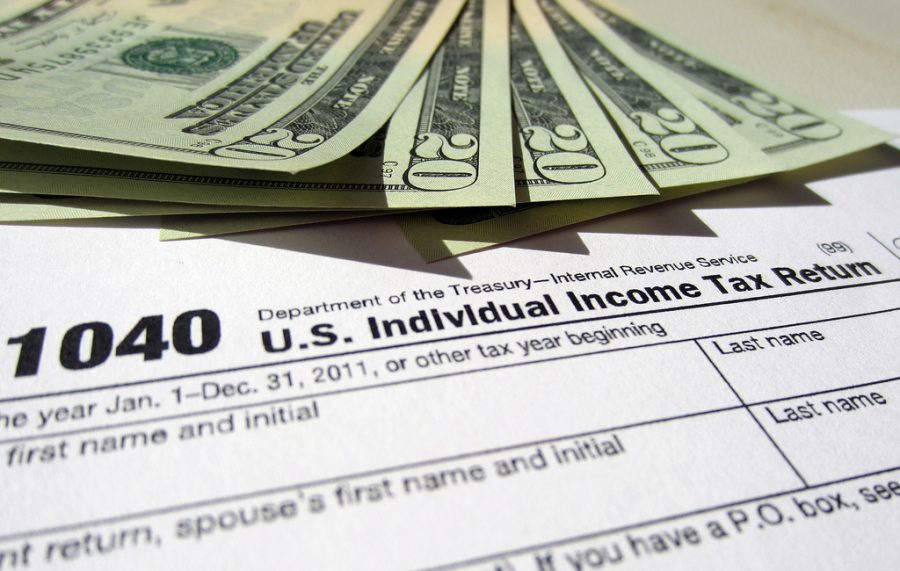The New Tax Plan: Will You Save?
On Nov. 16 of 2017, the House of Representatives passed the Tax Cuts and Jobs Act 227 to 205, giving President Trump and Speaker of the House Paul Ryan a political victory.
But is it good for you?
That depends on how much you earn, and how much you pay in tax to local and state governments.
The House legislation, if passed, will reduce the number of tax brackets from seven to four, cap the maximum income tax rate at 39.6 percent, and reduce the corporate tax rate from 35 percent to 25 percent or less.
Additionally, the penalty for not purchasing health insurance — $969 or 2.5 percent of your income, whichever is greater — would be removed.
This means that many healthier young people will not purchase health insurance, often with government subsidies — expected to save the government $338 billion dollars.
The new tax code comes with benefits for more than just people who don’t want insurance. The new plan is estimated to increase GDP growth by 3.5 percent and wages by 2.7 percent, in addition to about 800,000 more new jobs.
However, the plan has come under criticism for giving bigger breaks for high-income taxpayers. Despite leading to 0.9 percent higher after tax income for all taxpayers, the top 1 percent of taxpayers would see their after tax income increase by 3.4 percent.
Here are the estimated tax savings, according to Business Insider and the Tax Foundation:
ESTIMATED SAVINGS – Family of four, two children under 17
| INCOME | House Plan | Senate Plan |
| $25,000 | -$72 | $100 |
| $75,000 | $1,711 | $2,244 |
| $125,000 | $2,264 | $3,095 |
The plan has also come under criticism for an increase, not decrease, of $72 dollars in tax that a family of four with an income $25,000 or under must pay. The Senate tax plan, which has not yet been passed, would save these taxpayers $100 annually.
ESTIMATED SAVINGS – Individual, no children
| INCOME | House Plan | Senate Plan |
| $25,000 | $202 | $369 |
| $75,000 | $2,019 | $2,078 |
| $175,000 | $4,289 | $5,240 |
Despite providing a reduction in the tax burden, it will not be permanent. All these provisions are set to expire in 2025 — meaning that taxes will likely increase for over 50 percent of Americans if Congress does not continue them.
Under both plans, all Americans can expect to save on their taxes (except a family of four with a $25,000 income under the House plan) but this rising tide of tax cuts will lift some boats higher than others, especially the biggest boats.
Both tax plans call for the abolition of the estate tax, which, as the name implies, applies to estates over $5.6 million dollars, or $10.9 million if the estate is jointly owned by you and your spouse. This tax is a flat 40 percent and raises $19.3 billion dollars in total.
Because your estate has to be worth millions of dollars to even qualify for the tax, the majority of America’s estates will never pay a cent. Actually, once the tax is phased out, no estate will pay the tax, forcing the federal government to look elsewhere for 0.6 percent of its income.
However, the plan will also be giving the government an increase in taxable incomes, which would reduce revenue loss $186 billion dollars, or 13 percent. It is projected by the Tax Policy Center that the plan would increase deficit savings by over $3 trillion dollars until 2037 — however, it would not decrease the federal budget deficit, only slow the growth.
This means that even though all Americans will save, not all will experience the “huge” savings that Republican leaders have either promised or tacitly implied.
And residents of high tax states can now only deduct up to $10,000 for the state, local, property, and sales taxes they pay. Additionally, the maximum deduction for mortgage interest will be limited to $500,000, and itemized deductions for medical expenses will be removed.
This means that people who live in high tax states and communities and have high medical expenses will not be able to deduct the full cost. Additionally, homeowners with expensive houses will not be able to deduct their full mortgage interest payments — but considering that most middle class taxpayers don’t pay $500,000 in interest each year, there has been very little complaint.
So even though tax rates will drop, the lack of itemized deductions means that many people will continue paying the same amount or only saving a couple hundred dollars. Also, nobody will get to send a form to the IRS saying “I win,” contrary to President Trump’s campaign promise. At least, neither tax plan includes that.








